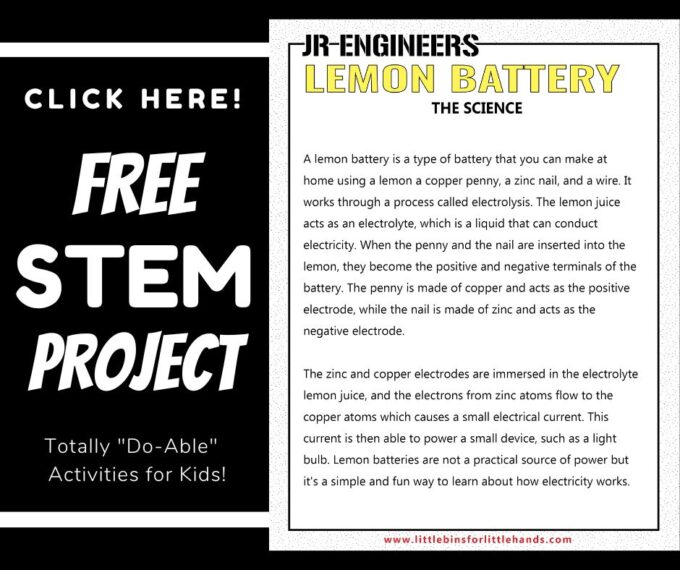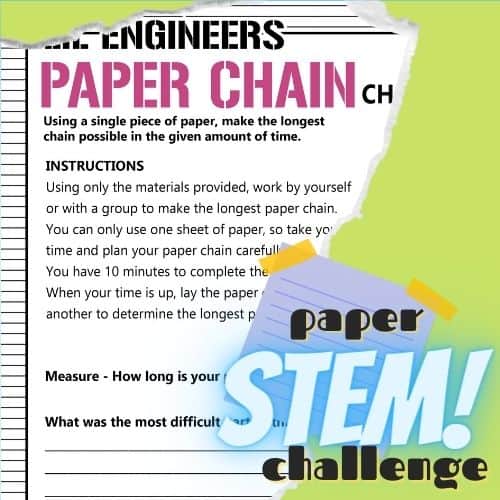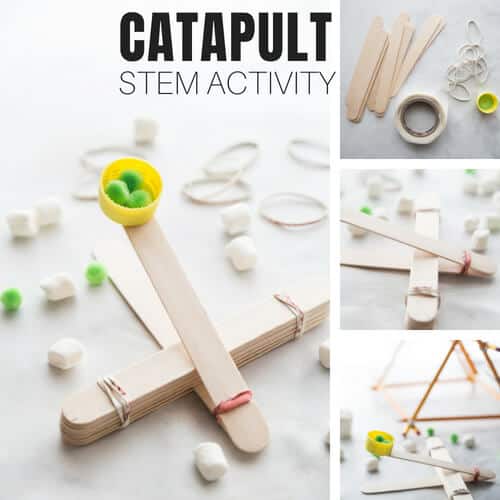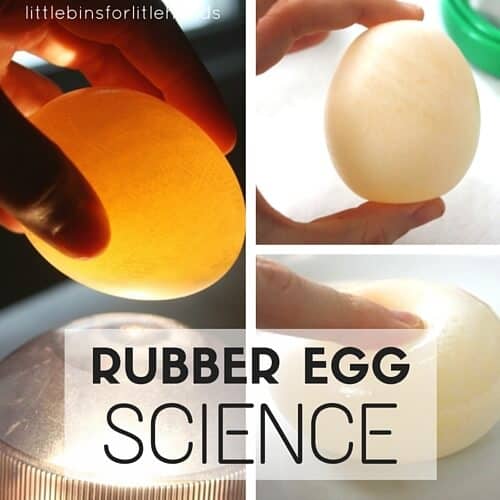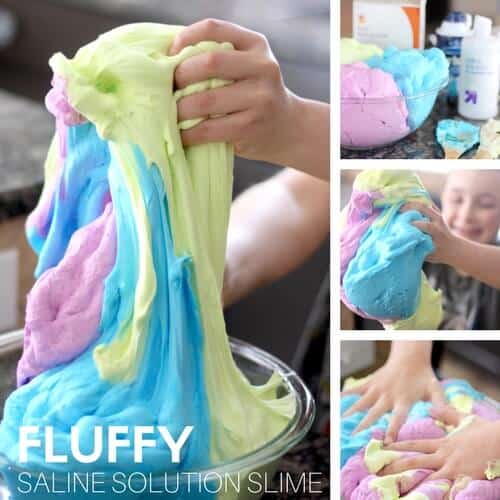What can you power with a lemon battery? Grab some lemons and a few other supplies, and find out how you can make lemons into lemon electricity! Even better, turn this into a lemon battery experiment or science project with a few simple ideas. We love hands-on and easy-to-set-up science experiments for kids.
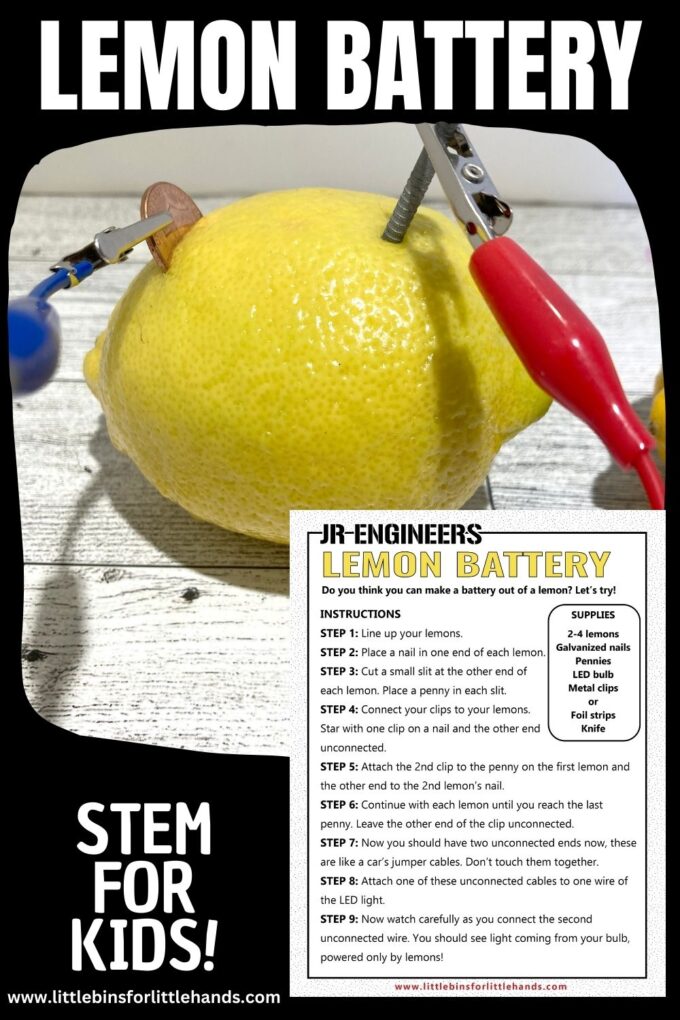
Power a Light Bulb with a Lemon Battery!
Powering a lightbulb with a lemon is a fun and educational experiment demonstrating electricity’s basic principles. Here’s a simple method to power a lightbulb with a lemon, suitable for kids.
Remember to supervise kids during this experiment, especially when handling the nails and using the wires. Enjoy exploring the world of science and electricity!
How Does a Lemon Battery Produce Electricity?
A lemon battery is a type of battery that you can make at home using a lemon and some simple materials. It works through a process called electrolysis.
Also check out how we powered a digital clock with a pumpkin battery!
Lemon juice acts as an electrolyte, which is a liquid that can conduct electricity.
When the penny and the nail are inserted into the lemon, they become the positive and negative terminals of the battery. The penny is made of copper and acts as the positive electrode, while the nail is made of zinc and acts as the negative electrode.
The zinc and copper electrodes are immersed in the electrolyte lemon juice, and the electrons from zinc atoms flow to the copper atoms which causes a small electrical current. This current is then able to power a small device, such as a light bulb.
Lemon batteries are not a practical source of power to use all the time but they are a simple and fun way to learn about how electricity works.
Make a Lemon Battery Science Fair Project
Want to turn this lemon battery into a cool lemon battery science project? Check out these helpful resources below to set up a fantastic science demonstration.
- Easy Science Fair Projects
- Science Project Tips From A Teacher
- Science Fair Board Ideas
- Variables In Science
How to Apply the Scientific Method
Apply the scientific method to this lemon battery project and turn it into a lemon battery experiment by choosing a question to investigate.
For example, does increasing the number of lemons increase the amount of electricity produced? Or which one powers a light bulb for longer, potato battery or lemon battery?
If you want to set up an experiment with several trials, pick one thing to change, such as the number of lemons! Don’t change everything! You need to change the independent variable and measure the dependent variable.
You can also get kids started by writing down their hypotheses before diving into the experiment. What do they think will happen when you increase the number of lemons used?
After performing the experiment, kids can conclude what happened and how it matched their initial hypotheses. You can always change a hypothesis upon testing your theory!
Free Printable Lemon Battery Project
Lemon Battery Experiment Set Up
Leftover lemons? Try this apple oxidation experiment, a lemon volcano, make invisible ink or fizzy lemonade for kitchen science!
SUPPLIES:
- 2 to 4 lemons
- Galvanized nails
- Pennies
- LED bulb
- Metal clips (Amazon Affiliate link) or Foil strips
- Knife
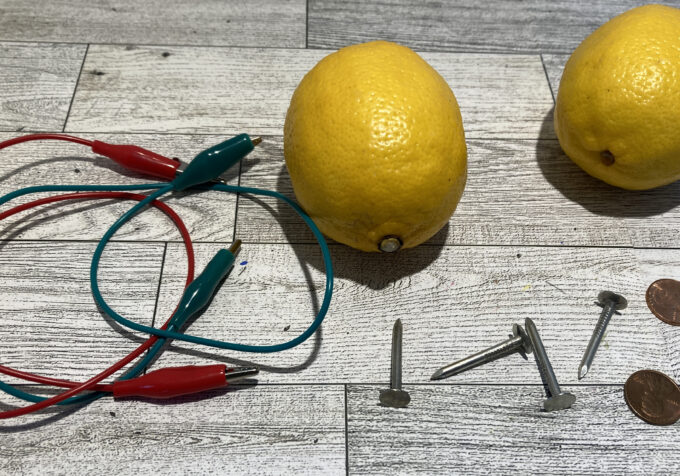
INSTRUCTIONS:
STEP 1: Line up your lemons.
STEP 2: Place a nail in one end of each lemon.
STEP 3: Cut a small slit at the other end of each lemon. Place a penny in each slit.
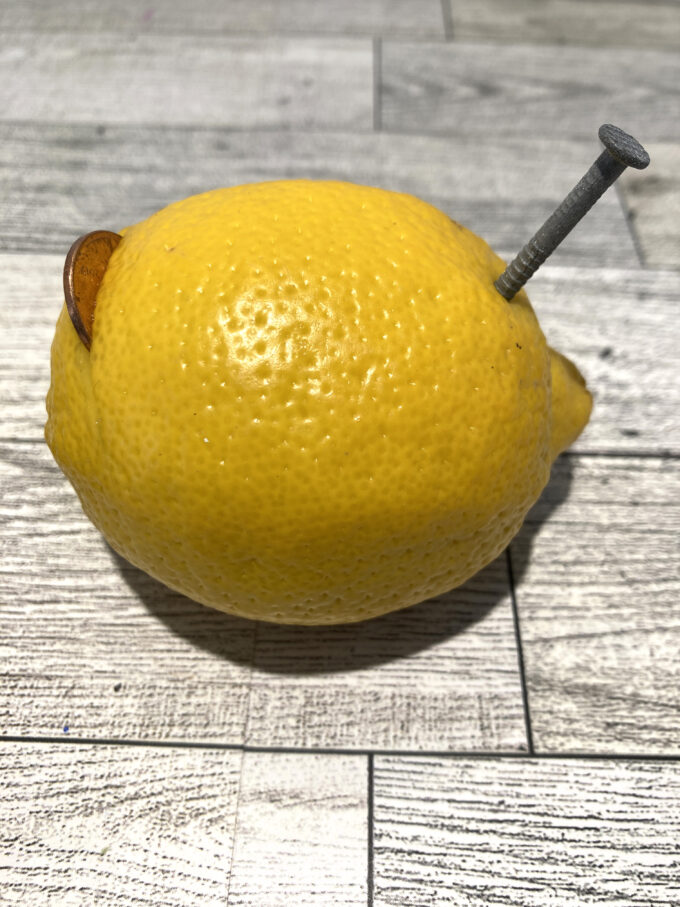
STEP 4: Connect your clips to your lemons. Start with one clip on a nail and the other end unconnected.
STEP 5: Attach the 2nd clip to the penny on the first lemon and the other end to the 2nd lemon’s nail.

STEP 6: Continue with each lemon until you reach the last penny. Leave the other end of the clip unconnected.
STEP 7: Now you should have two unconnected ends; these are like a car’s jumper cables. Don’t touch them together!
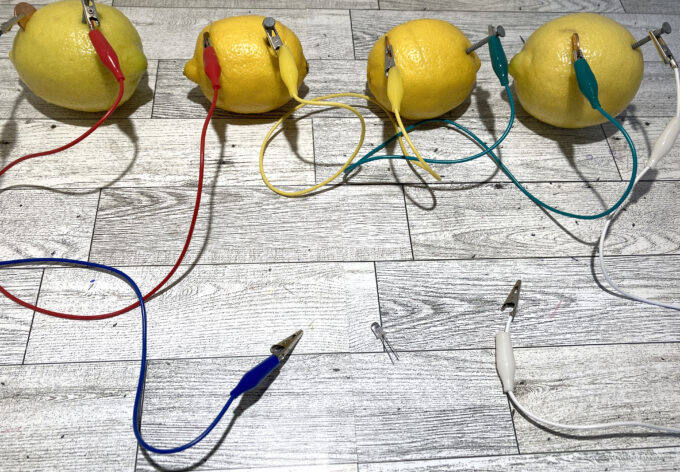
STEP 8: Attach one of these unconnected cables to one wire of the LED light.
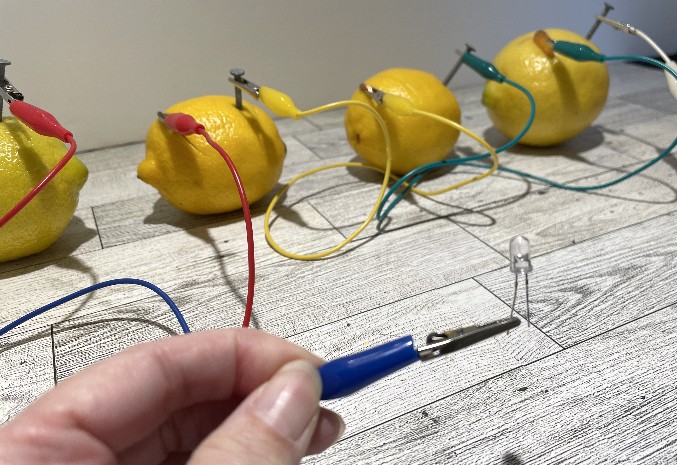
STEP 9: Now watch carefully as you connect the second unconnected wire. You should see the light coming from your bulb, powered only by lemons!
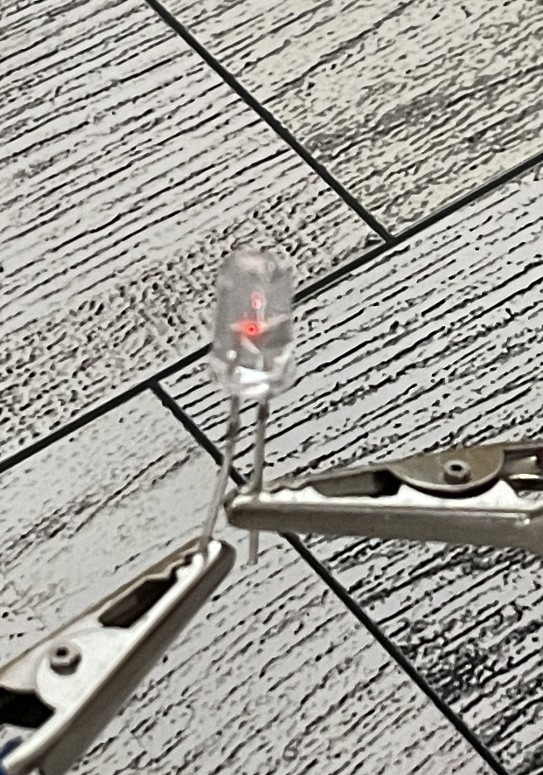
More Fun Science Experiments to Try
- Magic Milk Experiment
- Egg In Vinegar Experiment
- Skittles Experiment
- Freezing Water Experiment
- Growing Borax Crystals
Printable STEM Pack for Kids
80+ Doable Engineering Projects in one convenient pack!
- Full instructions with sample images
- Activity-specific instruction sheets
- Data Collection Sheets
- Questions for Reflection
- Architecture Building Cards: Try the tallest tower challenge
- Bridge Building Cards: Explore different types of bridges to build your own.
- Paper Chain STEM Challenge: Who can make the longest chain? Great icebreaker or quick challenge!
- 3 Little Pigs Architectural Pack: Design a house that won’t blow away!
- Great marshmallow challenge: A classic challenge kids love!
- Real-world STEM challenge lesson but don’t know where to start? Our easy-to-follow template shows the steps!
- What’s the difference between a scientist and an engineer?
- Crossword and word search with engineering vocabulary.
- Engineering vocabulary cards
- Design a one-of-a-kind invention and write about it with this 5-page activity!


